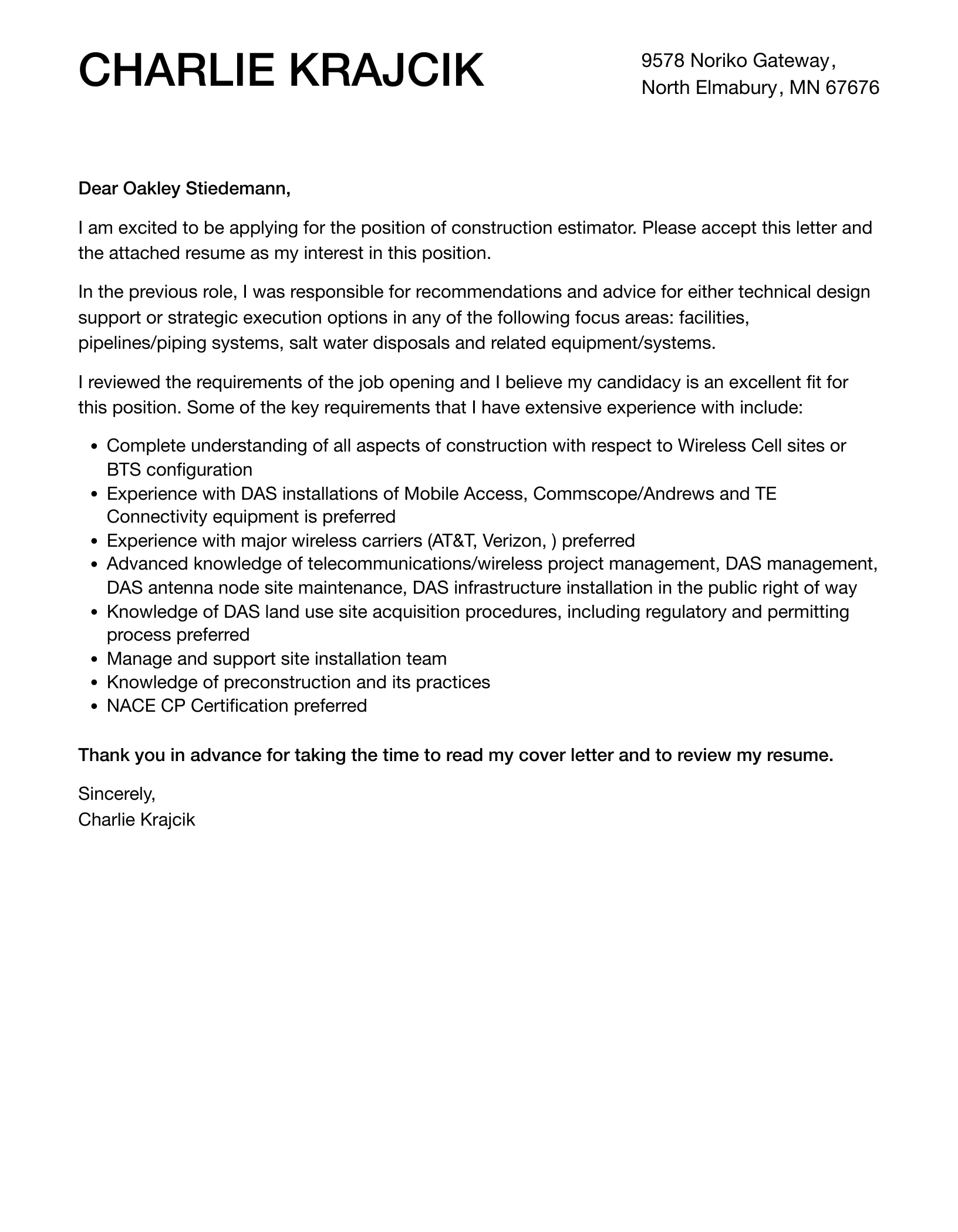What is an Estimator Cover Letter
An estimator cover letter is a crucial document that accompanies your resume when applying for estimator positions. It serves as your introduction to the hiring manager, providing a snapshot of your qualifications, skills, and enthusiasm for the role. Unlike a resume, which is a factual account of your work history, a cover letter allows you to showcase your personality and explain why you’re the perfect fit for the job. It’s your chance to make a strong first impression and convince the employer to delve deeper into your application. A well-crafted cover letter can significantly increase your chances of landing an interview, while a poorly written one can result in your application being overlooked. It is essentially your personal sales pitch to potential employers.
Key Components of an Effective Cover Letter
A compelling estimator cover letter consists of several key components. Firstly, a professional header with your contact information is essential. Next, addressing the hiring manager by name, if possible, demonstrates your attention to detail and genuine interest. The opening paragraph should immediately grab the reader’s attention, stating the position you’re applying for and briefly highlighting your key qualifications. The body of the letter should then elaborate on your skills, experience, and achievements, providing specific examples to support your claims. A strong closing paragraph should reiterate your interest, summarize your key qualifications, and include a clear call to action, such as requesting an interview. Finally, proofreading for any errors is non-negotiable. These components, when combined thoughtfully, create a cover letter that will stand out.
Formatting Your Estimator Cover Letter
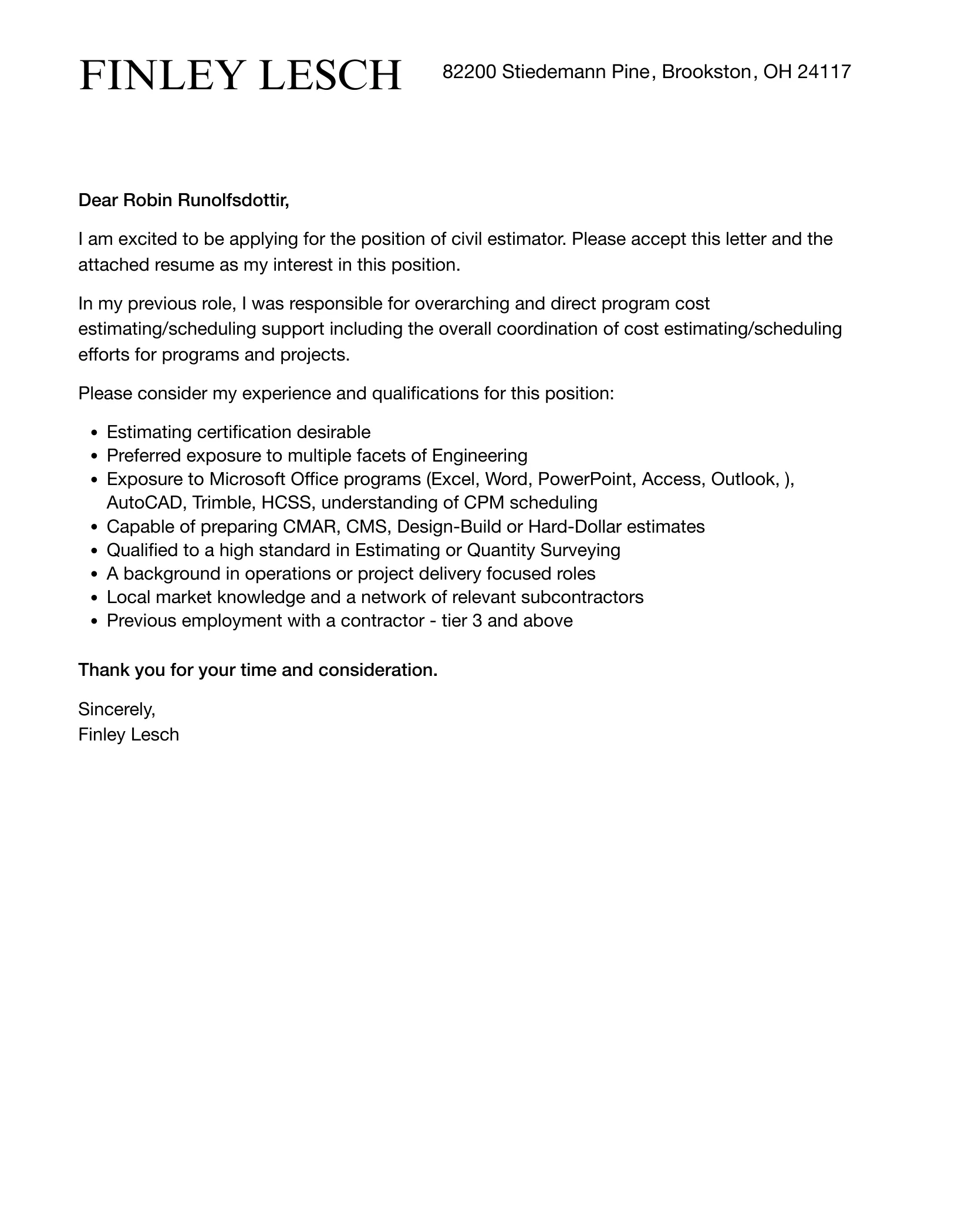
The format of your estimator cover letter is just as important as its content. Choose a professional and easy-to-read font like Times New Roman, Arial, or Calibri, and use a font size between 10 and 12 points. Maintain consistent formatting throughout the document, including the same font, size, and spacing. Use single spacing within paragraphs and double spacing between paragraphs to improve readability. Keep your letter concise and focused, aiming for a maximum of one page. Break up large blocks of text with short paragraphs and bullet points to make the information easier to digest. Consider using bolding or italics sparingly to emphasize key points, but avoid overusing them. A clean and well-formatted cover letter demonstrates your professionalism and attention to detail.
Writing the Header of Your Cover Letter
The header is the first thing the hiring manager sees, so it’s crucial to make a good impression. Start with your full name, address, phone number, and email address at the top left or right corner of the page. Make sure your email address is professional; avoid using nicknames or informal addresses. Below your contact information, include the date. Then, below the date, add the hiring manager’s name (if known), their title, and the company’s name and address. If you don’t know the hiring manager’s name, you can research on LinkedIn or the company website. This detailed header ensures the hiring manager knows who you are and how to reach you, immediately establishing professionalism.
Addressing the Hiring Manager
Personalizing your cover letter by addressing the hiring manager by name shows initiative and attention to detail. Do your research to find out the hiring manager’s name; this can often be found on the company’s website, LinkedIn, or by contacting the company directly. If you are unable to find a specific name, use a professional greeting like “Dear Hiring Manager” or “Dear [Company Name] Hiring Team.” Avoid generic greetings like “To Whom It May Concern,” which can make your letter feel impersonal. Addressing the hiring manager by name not only makes your cover letter more engaging but also demonstrates your genuine interest in the position and the company. It shows you’ve taken the time to go the extra mile.
Crafting the Opening Paragraph
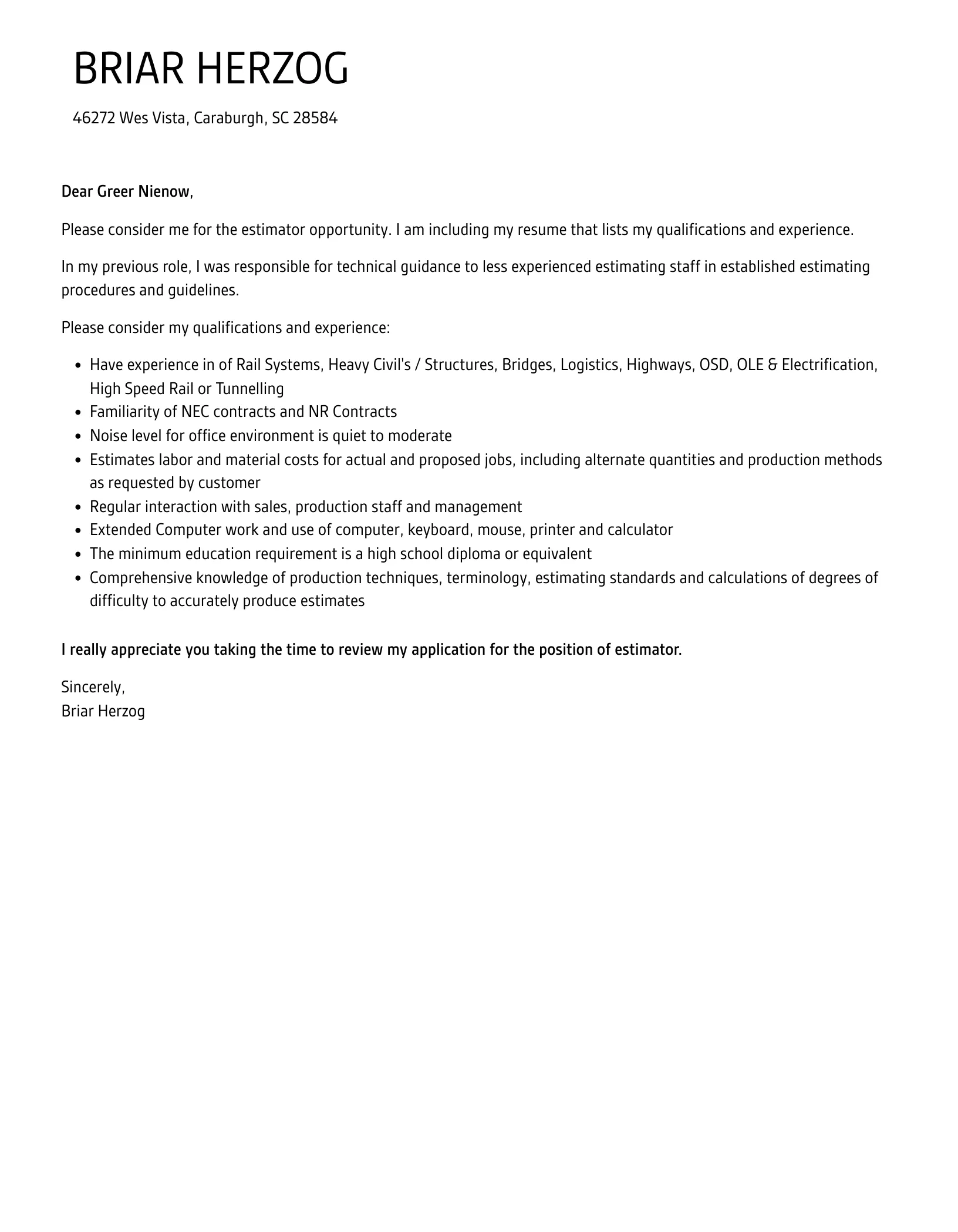
The opening paragraph is your first opportunity to capture the reader’s attention. Start by clearly stating the position you are applying for and where you found the job posting. Briefly mention your most relevant qualifications or the skills that make you a strong candidate. The opening should be concise and engaging, immediately conveying your enthusiasm for the role. You might also mention something specific that attracted you to the company or the position, demonstrating your interest beyond just wanting a job. Keep it brief, and avoid generic phrases. A strong opening paragraph sets the tone for the rest of your letter and encourages the reader to continue reading, setting the stage for your qualifications.
Highlighting Your Skills and Experience
In the body paragraphs, showcase your relevant skills and experience. Tailor your letter to the specific requirements of the job description. Provide specific examples of how you’ve used your skills to achieve positive outcomes in previous roles. Instead of simply listing your skills, describe how you’ve applied them. For example, instead of saying, “Proficient in cost estimating,” you could write, “Successfully completed over 50 cost estimates, resulting in an average of 95% accuracy in bid submissions.” Use keywords from the job description to show the employer that you meet their criteria. This is where you demonstrate how your skills and experience align with the job’s needs, illustrating your suitability for the position.
Quantifying Your Achievements
Whenever possible, quantify your achievements with numbers and data. This provides concrete evidence of your accomplishments and demonstrates your value. For example, instead of saying, “Improved project efficiency,” state, “Increased project efficiency by 15% through effective resource allocation.” Quantify your experience in areas like cost savings, project completion rates, and the number of estimates completed. This not only makes your achievements more impactful but also helps the hiring manager understand the specific contributions you’ve made in previous roles. Quantifiable results provide tangible proof of your capabilities and make your application more persuasive.
Demonstrating Your Knowledge
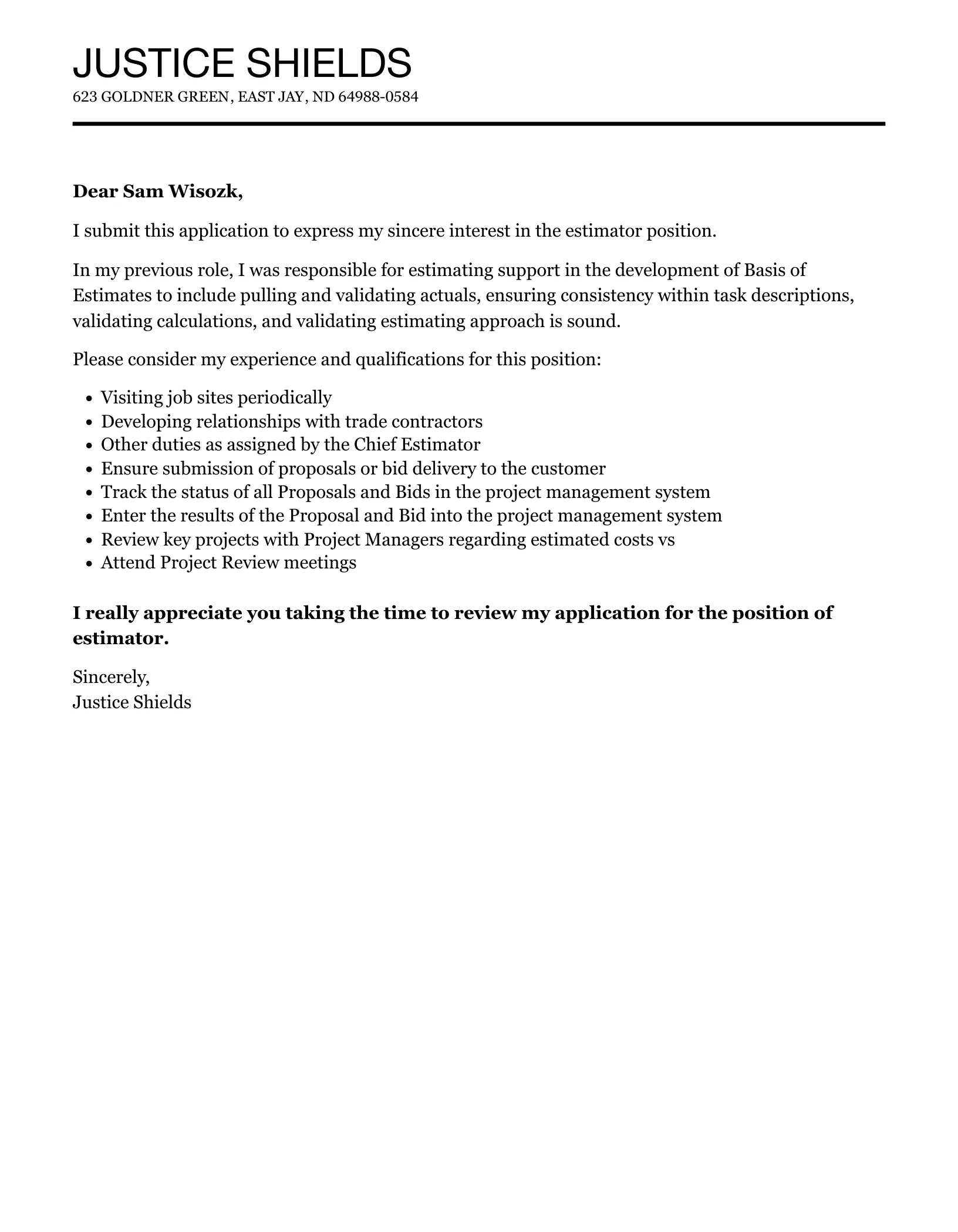
Demonstrate your knowledge of the industry, relevant software, and estimating methodologies. Mention specific software programs you are proficient in, such as Bluebeam, AutoCAD, or specific estimating software used in the construction field. Highlight your familiarity with different types of projects, such as commercial, residential, or industrial. Briefly discuss your understanding of industry best practices, relevant codes, and regulations. This shows the employer that you have the technical expertise to excel in the role. Showing your commitment to staying updated on industry trends and developments further strengthens your application and reinforces your understanding of the estimator role.
Expressing Your Enthusiasm and Fit
Express your genuine enthusiasm for the position and the company. Explain why you are interested in this particular opportunity and what attracts you to the organization. Research the company’s values, mission, and recent projects, and mention something specific that resonates with you. Show how your values and career goals align with the company’s objectives. This demonstrates that you’re not just looking for any job but are genuinely interested in working for that specific company. Highlight what aspects of the role or the company culture excite you, making your application more compelling and memorable.
Structuring Your Cover Letter Body
The body of your cover letter should be well-structured and easy to read. Use short, concise paragraphs to break up the text and improve readability. Focus each paragraph on a specific skill, experience, or achievement. Start each paragraph with a clear topic sentence that highlights the main point. Support your claims with specific examples and quantifiable results. Use keywords from the job description naturally throughout the body of your letter. Consider using bullet points or numbered lists to highlight key accomplishments or skills. The goal is to provide a comprehensive overview of your qualifications while keeping the information organized and easy to follow.
Adding a Call to Action
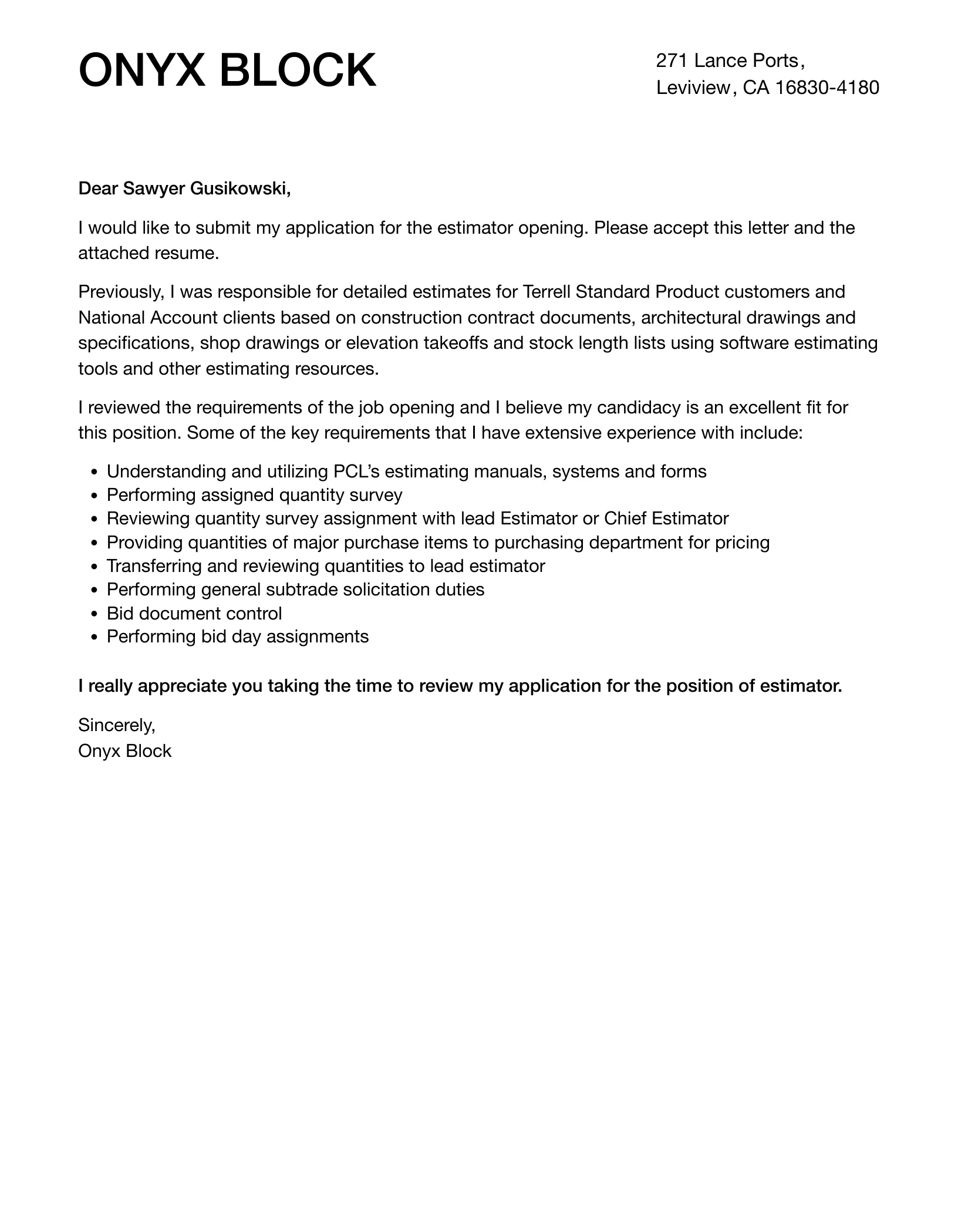
End your cover letter with a clear call to action. This tells the hiring manager what you want them to do next. Typically, this involves requesting an interview. Express your eagerness to discuss your qualifications further and reiterate your interest in the position. Provide your contact information again, making it easy for the hiring manager to reach you. Keep the tone confident and enthusiastic, and thank the hiring manager for their time and consideration. A strong call to action ensures that the hiring manager knows the next step, increasing your chances of moving forward in the application process. It should be direct, clear, and leave a positive final impression.
Formatting Your Closing
The closing of your cover letter should be professional and polite. Use a standard closing like “Sincerely,” “Best regards,” or “Thank you for your consideration.” Leave space for your signature, and then type your full name below. If you are submitting an electronic application, you can simply type your name. Ensure that your contact information is easily accessible in the header and closing. The closing should be a respectful and professional end to your cover letter, leaving the hiring manager with a positive impression. This final touch reinforces your professionalism and attention to detail.
Proofreading and Editing Your Cover Letter
Proofreading and editing are crucial steps in the cover letter writing process. Before submitting your cover letter, carefully review it for any grammatical errors, spelling mistakes, or typos. Read your cover letter aloud to catch any awkward phrasing or sentences that don’t flow well. Use a grammar checker tool to identify potential errors. Ask a friend, family member, or career counselor to review your cover letter for feedback. A polished, error-free cover letter demonstrates your attention to detail and professionalism. Errors can reflect poorly on your communication skills and can make your application less competitive. Ensuring accuracy is a key part of making a good impression.
Common Mistakes to Avoid
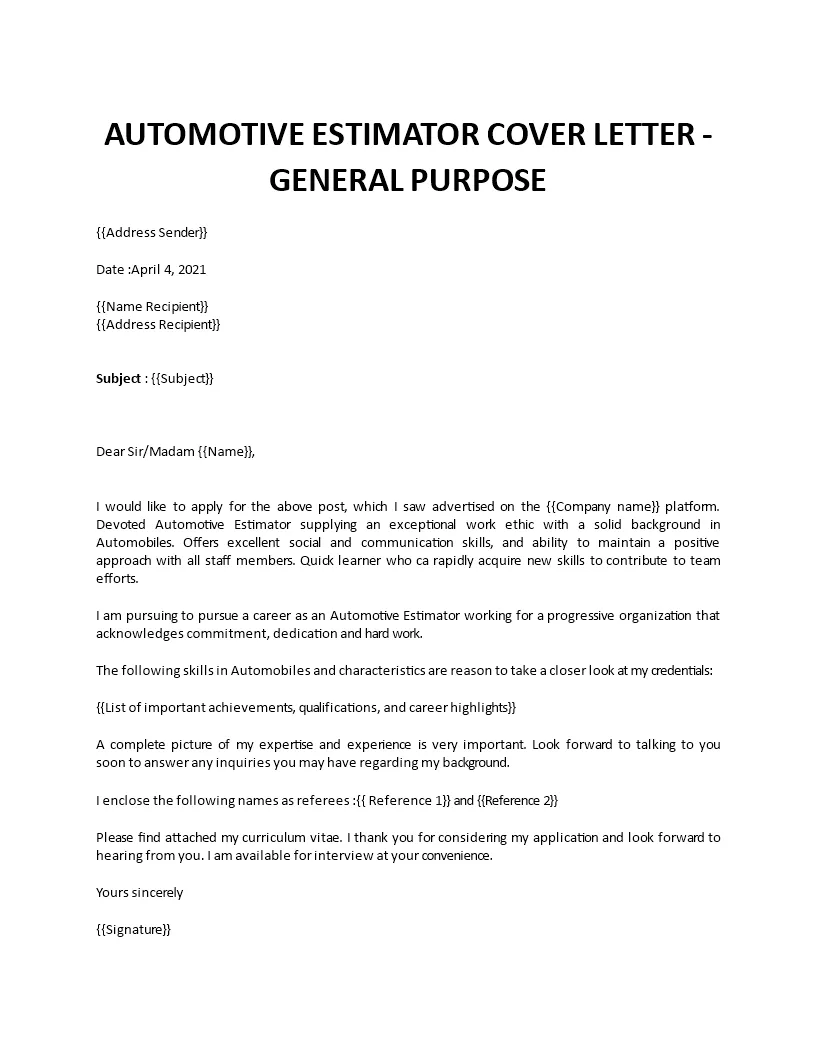
Several common mistakes can undermine your cover letter. Avoid using generic, cookie-cutter cover letters that aren’t tailored to the specific job. Don’t simply restate your resume; use the cover letter to elaborate and add context. Avoid grammatical errors, typos, and spelling mistakes. Don’t write too much or be too brief; aim for one page. Refrain from using jargon or overly complex language. Do not badmouth previous employers or companies. Ensure you follow the instructions provided in the job posting. Avoiding these pitfalls will greatly increase the effectiveness of your cover letter and enhance your chances of securing an interview. Ensure you are making the best impression possible.
Customizing for Each Job Application
It’s essential to customize your cover letter for each job application. Review the job description carefully and identify the key skills and qualifications the employer is seeking. Highlight your relevant experience and accomplishments, using keywords from the job description. Tailor your letter to the specific company and the role, demonstrating your understanding of their needs. This shows that you have taken the time to research the company and the position. A generic cover letter will not impress a hiring manager. Customizing your cover letter is an investment in your job search success.
Using Keywords in Your Cover Letter
Incorporate relevant keywords from the job description into your cover letter naturally. This helps the hiring manager and any applicant tracking systems (ATS) to identify your application as a good fit. Identify the key skills, qualifications, and software mentioned in the job posting. Use these keywords in your summary of qualifications, descriptions of your experience, and examples of your achievements. Avoid keyword stuffing; ensure the keywords fit naturally within your sentences. Using keywords will help your application stand out and demonstrate that you are a good match for the role.
Estimator Cover Letter Examples
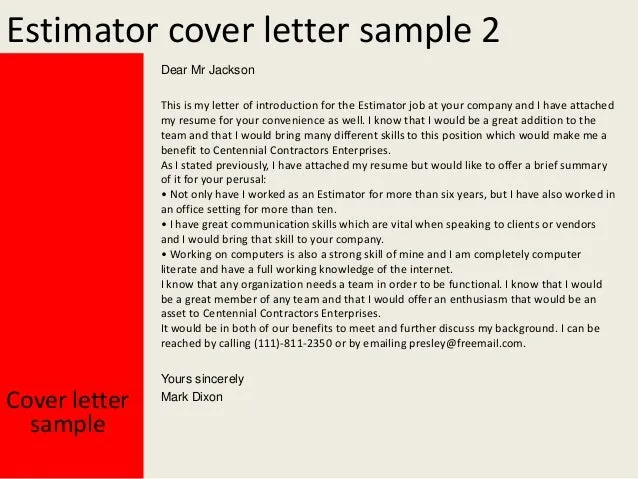
Reviewing cover letter examples can provide inspiration and guidance. There are numerous examples available online, tailored to different types of estimator positions. Use these examples as a template, but adapt them to reflect your own skills, experience, and the specific requirements of the job you are applying for. Pay attention to the format, language, and tone of the examples. Adapt the content to make it reflect your personality and experience. While cover letter examples provide helpful starting points, always personalize them to ensure your letter is unique and authentic.
Example 1 Construction Estimator
Here’s a basic structure for a construction estimator cover letter, which you can modify to suit your experience. Start with the header, followed by the date and the hiring manager’s information. In the opening paragraph, state your interest in the construction estimator position and mention the company’s name. In the body, highlight your experience with specific construction projects, your proficiency with estimating software, and your ability to read blueprints and specifications. Mention specific projects to show your expertise. Quantify your achievements by stating how you improved efficiency or lowered costs in previous roles. In the closing, express your enthusiasm, reiterate your interest, and add a call to action.
Example 2 Cost Estimator
For a cost estimator role, focus on your skills in cost analysis, budgeting, and financial planning. In the opening, state your interest in the cost estimator position and your skills with cost management tools. In the body, discuss your experience in creating and managing budgets, analyzing costs, and providing detailed cost estimates. Quantify your achievements by mentioning successful cost-saving initiatives and projects completed under budget. Highlight your experience in specific industries. In the closing, state your enthusiasm for the role, reiterate your interest, and encourage the hiring manager to contact you for an interview.
Example 3 Senior Estimator

If applying for a senior estimator role, your cover letter should emphasize leadership experience and in-depth technical knowledge. In the opening, state your interest in the senior estimator position and mention the name of the company. In the body, highlight your experience in leading estimating teams, managing complex projects, and providing strategic input. Showcase your understanding of construction processes and the ability to mentor junior estimators. Quantify your achievements by mentioning project completion rates and the number of team members managed. Mention any specializations you have. In the closing, reiterate your enthusiasm, mention your interest, and provide a call to action.
Final Thoughts
Writing an effective estimator cover letter is a critical step in the job application process. By following these guidelines, you can create a cover letter that showcases your skills, experience, and enthusiasm. Remember to tailor your letter to each job, proofread carefully, and quantify your achievements. A well-crafted cover letter will significantly increase your chances of landing an interview and ultimately securing your desired estimator position. Take your time, research the company, and let your skills and experience shine. Good luck with your job search!
Next Steps to Apply
After crafting your cover letter and resume, the next step is to submit your application. Make sure you follow the instructions provided in the job posting. Double-check that you’ve attached all required documents, and submit your application before the deadline. Be prepared to follow up with the hiring manager after submitting your application. Following up shows your continued interest and can help you stand out from other applicants. Preparing for the interview is key to getting a job offer. By preparing diligently, you can significantly improve your chances of success. Good luck, and always be professional!
